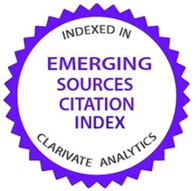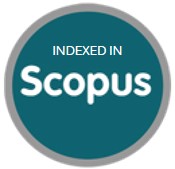La inteligencia como organización burocrática: disfunciones del modelo weberiano
DOI:
https://doi.org/10.21830/19006586.701Palabras clave:
burocracia, gestión, organización gubernamental, seguridad del Estado, servicios de inteligenciaResumen
Si bien el desarrollo histórico de los servicios de inteligencia durante el siglo XX fue altamente dispar, desde una aproximación comparativa se observa que gran parte de las comunidades de inteligencia de regímenes políticos democráticos mantienen hoy en su estructura y funcionamiento grandes semejanzas, producto de una institucionalización determinada por el modelo de organización burocrática de tipo weberiano. Así, este artículo busca comprender los aspectos organizacionales de los servicios de inteligencia desde la perspectiva de la racionalidad burocrática, con el propósito de explorar las críticas a este modelo y evaluar su relación con las disfunciones en el ámbito particular de los servicios de inteligencia. Los resultados muestran que estas distorsiones afectan la funcionalidad y la legitimidad de estas organizaciones, lo que muestra la necesidad de buscar cambios del modelo actual.
Descargas
Referencias bibliográficas
Aid, M. M. (2011). Sins of ommission and commission: Strategic cultural factors and US intelligence failures during the Cold War. Intelligence and National Security, 26(4), 478-494. https://doi.org/10.1080/0 2684527.2011.580602
Andregg, M. (2012). Do intelligence bureaucracies fear ethics, and if so, why? International Journal of Intelligence Ethics, 3(2), 100-120. https://journals.flvc.org/ijie/article/view/83455
Allen, C. & Coates, B. (2009, julio). Strategic decision-making paradigms: A primer for seniors leaders. U.S. Army War College.
Arcos, R., & Palacios, J. M. (2019). EU INTCEN: A transnational European culture of intelligence analysis? Intelligence and National Security, 35(1), 1-23. https://doi.org/10.1080/02684527.2019.1649912
Betts, R. K. (1978). Analysis, war, and decision: Why intelligence failures are inevitable. World Politics, 31(1), 61-89.
Bigo, D. (2019). Shared secrecy in a digital age and a transnational world. Intelligence and National Security, 34(3), 382. https://doi.org/10.1080/02684527.2019.1553703
Braybrooke, D., & Lindblom, C. E. (1963). A strategy of decision. The Free Press.
Brewin, R. L. (1964). A review of the concept of military worth and its application in military decision making [master’s thesis, United States Naval Postgraduate School, California]. Defense Technical Information Center. https://apps.dtic.mil/sti/citations/AD0479605
Cayford, M., & Pieters, W. (2020). Effectiveness fettered by bureaucracy – why surveillance technology is not evaluated. Intelligence and National Security, 36(7), 1026-1041. https://doi.org/10.1080/0268452 7.2020.1772539
Clark, R. M. (2013). Intelligence analysis. A target-centric approach. CQ Press.
Cohen, M. D., March, J. G., & Olsen, J. P. (1972) A garbage can model of organizational choice. Administrative Science Quarterly, 17, 1-25.
Cremades, A. (2016, 7 de marzo). Teoría de juegos y análisis estratégico: una revisión metodológica en torno a la toma de decisiones y el conflicto internacional (Documento de Opinión 23). Instituto Español de Estudios Estratégicos. https://bit.ly/3cQIr0I
Cremades, A. (2017). Inteligencia y secreto en Guatemala: la trascendencia del Archivo Histórico de la Policía Nacional. Universidad de San Carlos de Guatemala.
Cremades, A., & Payá, A. (2017). Inteligencia y decision: apuntes sobre el papel de los analistas. En J. J. Delgado (Coord.), Inteligencia aplicada a la seguridad del siglo XXI. Epraxis.
Crozier, M. (2010). The bureaucratic phenomenon. Transaction Publishers.
Deputy to the DCI for Resource Management. (2004). National Index of Intelligence Products for Intelligence Consumers. Memorandum for Director of Central Intelligence. Originalmente publicado el 17 de julio de 1978.
Díaz, A. (2006). El papel de la comunidad de inteligencia en la toma de decisiones de la política exterior y de seguridad de España (Documento de Trabajo 3/2006). Observatorio de Política Exterior Española, Fundación Alternativas.
Díaz, G. (2005, enero). Methodological approaches to the concept of intelligence failure (Unisci Discussion Papers).
Donovan, W. (1941, 10 de junio). Memorandum of Establishment of Service of Strategic Information. Washington D. C.
Durbin, B. (2017). The CIA and the politics of US intelligence reform. Cambridge University Press.
Farson, S. (2012). Establishing effective intelligence oversight systems. En H. Born & A. Wills (Eds.), Overseeing intelligence services: A toolkit. DCAF.
Gill, P. (2005). Policing politics: Security intelligence and the liberal democratic state. Frank Cass.
Gill, P. (2009). Theories of intelligence ¿Where are we, where should we go and how might we proceed? En P. Gill, S. Marrin, & M. Phytian, Intelligence theory: Key questions and debates. Routledge.
Gill, P. (2018). The way of explaining intelligence organization and process. Intelligence and National Security, 33(4), 578. https://doi.org/10.1080/02684527.2018.1452566
Hedley, J. H. (2007). Learning from intelligence failures. Intelligence Journal of Intelligence and Counterintelligence, 18(3), 435-450. https://doi.org/10.1080/08850600590945416
Heuer, R. J. (1999). Psychology of intelligence analysis. Center for the Study of Intelligence, Central Intelligence Agency.
Hill, M. (2005). The public policy process. Pearson Longman.
Hilsman, R. (1956). Strategic intelligence and national decisions. The Free Press.
Hoffman, F. (2015, 19 de agosto). Black swans and pink flamingos: Five principles for force design. War on the Rocks. https://bit.ly/2OMnoVc
Hoffmann, S. (2019). Why is there no IR scholarship on intelligence agencies? Some ideas for a new approach (ZMO Working Paper 23). SSOAR. https://bit.ly/3tuh4QO
House of Commons. (2004, 14 de julio). Review of intelligence on weapons of mass destruction. Report of a Committee of Privy Counsellors. https://fas.org/irp/world/uk/butler071404.pdf
House of Commons. (2016, 6 de julio). The report of the Iraq inquiry. Report of a Committee of Privy Counsellors. https://bit.ly/3cVMEAd
Jordán, J. (2016). Una revisión del ciclo de inteligencia (Análisis GESI, 2). http://hdl.handle.net/10481/40628
Kahneman, D. (2003). Maps of bounded rationality: Psychology for behavioral economics. The American Economic Review, 93(5), 1449-1475.
Kendall, W. (1949). The function of intelligence. World Politics, 1(4), 542-552.
Kent, S. (1965). Strategic intelligence for american world policy. Archon Books.
Marrin, S. (2011). The 9/11 terrorist attacks: A failure of policy not strategic intelligence analysis. Intelligence and National Security, 26(2-3), 182-202. https://doi.org/10.1080/02684527.2011.559140
Marrin, S. (2014). Improving intelligence studies as an academic discipline. Intelligence and National Security, 31(2), 266-279. https://doi.org/10.1080/02684527.2014.952932
Marrin, S. (2018). Why intelligence analysis has limited influence on American foreign policy. Intelligence and National Security, 32(6), 725-742. https://doi.org/10.1080/02684527.2016.1275139
Matei, F. C., & De Castro, A. (2019). Transitional justice and intelligence democratization. International Journal of Intelligence and CounterIntelligence, 32(4), 717-736. https://doi.org/10.1080/0885060 7.2019.1621106
Merton, R. C. (1968). Social theory and social structure. The Free Press.
Negroponte, J. D., y Wittenstein, E. M. (2010). Urgency, opportunity, and frustration: Implementing the intelligence reform and terrorism prevention act of 2004. Yale Law & Policy Review, 28(2), 379-417.
Office of the Director of National Intelligence (ODNI). (2011). U.S. National Intelligence: An overview 2011.
Office of the Director of National Intelligence (ODNI). (2019). Intelligence community legal reference book. Office of General Council.
Piedra C., L. (2012). Coyunturas críticas en los sistemas de inteligencia. Flacso-Sede Ecuador.
Perrow, C. (1984). Normal accident: Living with high-risk technology. Basic Books.
Pfluke, C. (2019). A history of the Five Eyes Alliance: Possibility for reform and additions. Comparative Strategy, 38(4), 302-315. https://doi.org/10.1080/01495933.2019.1633186
Pouliot, V., & Mérand, F. (2011). Bourdieu’s concepts. En R. Adler-Nisse (Ed.), Bourdieu in international relations: Rethinking key concepts in IR. Routledge.
Richards, J. (2013). Pedalling hard: Further questions about the intelligence cycle in the contemporary era. En M. Phythian (Ed.), Understanding the intelligence cycle. Routledge.
Rubinstein, A. (1998). Modeling bounded rationality. The MIT Press.
Select Committee on Intelligence. (2004, 7 de julio). Report on the U.S. Intelligence Community’s prewar intelligence assessments on Iraq. United States Senate. https://fas.org/irp/congress/2004_rpt/ssci_iraq.pdf
Shiraz, Z., & Aldrich, R. J. (2019). Secrecy, spies and the global south: Intelligence studies beyond the “Five Eyes” alliance. International Affairs, 95(6), 1313-1329. https://doi.org/10.1093/ia/iiz200
Simon, H. A. (1990). Invariants of human behavior. Annual Review of Psychology, 41, 1-19.
Streeck, W., & Thelen, K. (2005). Beyond continuity: Institutional change in advanced political economics. Oxford University Press.
Stephens, T. W. (1976). Bureaucracy, intelligence and technology: a reappraisal. World Affairs, 139(3), 231-243.
Taleb, N. (2007). The black swan: The impact of the highly improbable. Random House.
Taylor, R. J. (1993). Operational art and intelligence: What is the relationship? [monografía, United States Army Command and General Staff Collegue, Fort Leavenworth]. https://apps.dtic.mil/sti/pdfs/ADA331320.pdf
Torres F., M. (2018). Servicios de inteligencia como estructuras burocráticas: origen y doctrina. En R. Salgado & D. Gudiño (Eds.), Desde el sur: visiones y aportes a los estudios internacionales desde Latinoamérica. Friedrich-Ebert-Stiftung (FES-ILDIS) Ecuador.
Turing, A. M. (1952). The chemical basis of morphogenesis. Philosophical Transactions of the Royal Society of London, 237(641), 37-72.
U.S. Senate Select Committee on Intelligence & U.S. House Permanent Select Committee on Intelligence. (2002). Joint inquiry into intelligence community activities before and after the terrorist attacks of September 11, 2001. https://bit.ly/3lzMkeC
Van Puyvelde, D., & Curtis, S. (2016). Standing on the shoulders of giants: diversity and scholarship in intelligence studies. Intelligence and National Security, 31(7), 1040-1054. https://doi.org/10.1080/026 84527.2016.1185323
Wahlert, M. H. (2012). The “motivated bias” dilemma in warfare and intelligence. Defense & Security Analysis, 28(3), 247-259.
Warner, M., & McDonald, J. J. (2005). US Intelligence Community Reform Studies Since 1947. Center for the Study of Intelligence, Washington DC.
Weaver, W. (1946). Analytical studies in aerial warfare. Summary technical report of the Applied Mathematics Panel, vol. 2. Office of Scientific Research and Development.
Weber, M. (2008). Economía y sociedad. Fondo de Cultura Económica.
Weintraub, E. Roy (2016). Game theory and Cold War rationality: A review essay (CHOPE Working Paper, 2016-19). Duke University, Center for the History of Political Economy (CHOPE), Durham, NC.
Wheaton, K. (2012). Re-imagining the intelligence process. 2012 Annual Conference of the International Studies Association.
Wirtz, J. J. (2016). Understanding intelligence failure: Warning, response and deterrence. Routledge.
Wucker, M. (2016). The gray rhino: How to recognize and act on the obvious dangers we ignore. St. Martin’s Press.
Descargas
Publicado
Cómo citar
Número
Sección
| Estadísticas de artículo | |
|---|---|
| Vistas de resúmenes | |
| Vistas de PDF | |
| Descargas de PDF | |
| Vistas de HTML | |
| Otras vistas | |

























